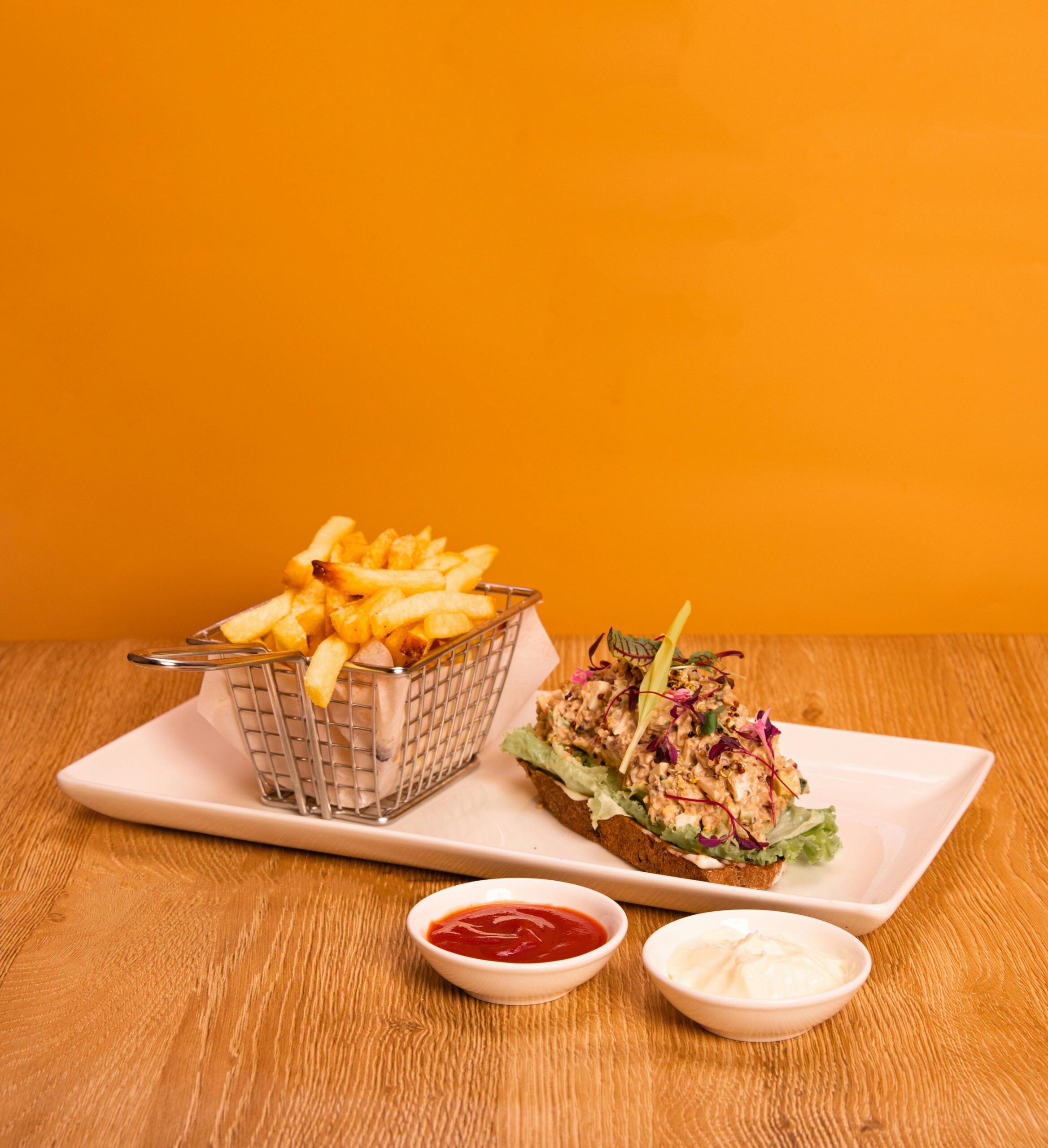- Is a Pizzeria a Profitable Business?
- Designing Your Pizzeria Business Plan
- Create a Robust Pizzeria Business Model and Let Orders.co Help You Succeed
Pizza Hut recently planned a special release of its version of a burger, but it didn’t look like the usual burgers from McDonald’s or Burger King.
Instead, it mixed the best of pizza and burgers into something unique. This creative idea shows the importance of thinking outside the box and planning well in the food business.
Starting a successful pizzeria as an independent restaurant owner requires the same creativity and careful planning. Whether you’re new to the restaurant industry or have extensive experience, making a good restaurant business plan for your pizzeria is key.
So, let’s explore the steps to creating a winning pizzeria business plan that will help you succeed in a competitive market!
Is a Pizzeria a Profitable Business?
If you’re still on the fence about opening your own pizzeria, then jump right up!
Consider this impressive statistic: consumers in the United States spent around 41.3 billion U.S. dollars on pizza within the quick-service restaurant (QSR) industry in 2023.
In fact, QSR sales in the pizza category are the second largest, only behind hamburgers. This significant spending highlights the strong demand for pizza and the lucrative opportunities it offers.
Here are also several reasons why a pizzeria can be a profitable business:
- High Demand: Pizza is a beloved food choice across all age groups and demographics. Its universal appeal makes sure there’s a steady stream of customers, from families looking for a quick meal to college students ordering late-night snacks.
- Variety and Customization: Pizzerias can offer a wide range of options, from classic Margherita and pepperoni pizzas to gourmet and customized toppings. This variety attracts different customer segments, increasing the potential customer base.
- Delivery and Takeout: The convenience of the pizza delivery business and takeout services makes it a popular choice, especially in today’s fast-paced world. With the increase in online ordering and food delivery apps, it’s easier than ever to reach customers who prefer dining at home.
- Loyal Customer Base: Many pizzerias benefit from a loyal customer base that frequently returns for their favorite pizzas. Offering loyalty programs and special deals can further enhance customer retention.
- Cost Management: Pizza ingredients, such as dough, cheese, and toppings, can be bought in bulk at lower costs. Effective inventory management and portion control help maintain good profit margins.
- Scalability: A successful pizzeria can expand by opening additional locations or franchising the brand. This scalability allows for significant growth and increased profits over time.
A well-planned pizzeria can become a thriving business by getting advantages, leading to fruitful success in the competitive food industry.
Designing Your Pizzeria Business Plan
Creating a detailed business plan is crucial for the success of your pizzeria. It serves as a roadmap, guiding you through the process of establishing and growing your business. Here are the essential steps and considerations to include in your pizzeria business plan:
Choose a Business Structure
Decide on the legal structure of your pizzeria. Options include:
- Sole Proprietorship: Simple and easy to set up, but offers no personal liability protection.
- Partnership: Shared responsibility and profits, suitable if starting with a partner.
- Limited Liability Company (LLC): Provides liability protection and has flexible tax options.
- Corporation: More complex, with greater liability protection and potential tax benefits.
Register your business with local, state, and federal authorities, and obtain any necessary licenses and permits.
Define Your Target Market
Conduct a market analysis and identify the specific demographic you aim to serve. Consider factors like:
- Location: Urban vs. suburban areas, proximity to schools, offices, and residential zones.
- Customer Demographics: Age, income level, dietary preferences, and dining habits.
- Competitor Analysis: Research existing pizzerias in the area and identify gaps you can fill.
Calculate All Costs of Opening Your Pizzeria
Thoroughly estimate all expenses involved in starting and running your pizzeria:
- Initial Costs:
- Lease/Rent: Cost of leasing or purchasing a location.
- Renovations: Expenses for remodeling the space to fit your brand and operational needs.
- Licenses and Permits: Health permits, business licenses, and other legal requirements.
- Equipment: Pizza ovens, refrigerators, kitchen tools, and furniture.
- Operational Costs:
- Salaries and Wages: Determine the approximate number of employees needed (cooks, servers, managers) and their salaries.
- Inventory: Initial stock of ingredients, packaging, and supplies.
- Utilities: Electricity, gas, water, and waste management.
- Marketing: Costs for advertising, promotions, and social media campaigns.
- Technology: POS systems, website development, and online ordering platforms.
Funding Your Business
Explore different funding options to cover your initial and operational costs:
- Personal Savings: Using your own money to finance the business.
- Loans: Small business loans from banks or credit unions.
- Investors: Securing funds from private investors or venture capitalists.
- Grants: Look for grants available for small businesses in the food industry.
Decide on Delivery Options
Consider how you will handle deliveries:
- In-house Delivery Drivers: Hiring your own drivers provides more control but adds to payroll and insurance costs.
- Partnering with Delivery Apps: Collaborating with services like Uber Eats, DoorDash, or Grubhub can extend your reach but involves service fees.
Financial Projections
Create detailed financial projections to plan for profitability:
- Projected Profit and Loss Statement: Estimate your revenues, cost of goods sold (COGS), gross profit, operating expenses, and net profit.
- Break-Even Analysis: Determine the point at which your revenues will cover your costs, indicating when you’ll start making a profit.
Marketing Strategy
Develop a comprehensive marketing plan to attract and retain customers:
- Brand Identity: Create a unique and appealing brand, including a logo, color scheme, and slogan.
- Online Presence: Build a professional restaurant website and maintain active social media profiles.
- Promotions and Discounts: Offer special deals, loyalty programs, and discounts to attract customers.
- Community Engagement: Participate in local events, sponsor community activities, and network with local businesses.
By carefully planning each step and considering all the factors involved, you can create a solid pizza business plan that will guide you toward building a successful and profitable pizzeria.
Create a Robust Pizzeria Business Model and Let Orders.co Help You Succeed
Developing a pizza shop business plan is a comprehensive process that requires careful planning, strategic decision-making, and a clear understanding of the market.
Every step is crucial for your success, from choosing the right business structure and identifying your target market to calculating costs and creating a robust financial plan.
Marketing, efficient delivery options, and a strong online presence are also key components that will help your pizzeria stand out and thrive.
To make this journey easier, consider using the powerful tools and services offered by Orders.co.
Our platform can significantly simplify your operations and boost your efficiency in several ways:
- Orders Consolidation: Manage multiple orders from different delivery apps on one device, ensuring consistency and efficiency.
- Custom Ordering Website: Create a commission-free, customizable website for direct sales, integrating loyalty programs and AI marketing tools.
- Menu Management: Easily update your menu across all platforms, ensuring accuracy and eliminating out-of-stock issues.
- Marketing Solutions: Drive customer engagement and repeat visits with AI-powered emails, text messages, and loyalty programs.
By utilizing Orders.co, you can confidently navigate pizza restaurant management and focus on what you do best—creating delicious pizzas that keep your customers returning for more.
Schedule a FREE demo with Orders.co today to see how these tools can help your pizza business start swiftly and operate smoothly.



